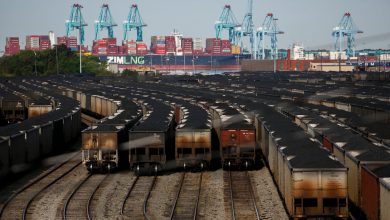Tesla Sales Rebound After Steep Price Cuts

Tesla sales jumped during the last three months of 2023 after the carmaker slashed prices and customers rushed to take advantage of tax breaks on electric vehicles — provisions that will be harder to come by in 2024.
The company said on Tuesday that it sold 484,000 cars in the fourth quarter, up from 435,000 in the third quarter and 405,000 in the fourth quarter of 2022. For the full year, Tesla sold 1.8 million vehicles. The gains put Tesla on track to sell more than two million cars in 2024, potentially overtaking established carmakers like Mercedes-Benz and Renault.
The rebound in sales during the fourth quarter should help calm investor concerns about whether Tesla can defend its dominance of the market for electric vehicles as it faces increased competition from traditional carmakers.
During the last year, Tesla has lost market share to rivals like General Motors, Hyundai, Ford Motor and Volkswagen as they introduced more electric vehicles. Tesla accounts for half the electric cars sold in the United States. In 2022, Tesla accounted for two-thirds of the market.
In China, the largest market for electric cars, Tesla faces intense competition from BYD and other Chinese automakers. In Europe, Volkswagen and its Audi and Skoda divisions sell more electric vehicles than Tesla, although the Tesla Model Y is by far the best-selling model on the Continent, according to data compiled by Schmidt Automotive Research.
In the United States, people interested in buying an electric car had a strong incentive to take delivery before the end of the year because of new rules intended to cut China out of the supply chain.
Tesla had warned on its website that the two least expensive versions of its Model 3 sedan would no longer qualify for $7,500 federal tax credits after Dec. 31. The cars have batteries made in China. Germany and some other European countries have also rolled back subsidies for electric vehicle buyers.
To maintain sales, Tesla cut prices, offering Model 3s on its website for well under $30,000 after factoring in the tax credits. By late December, the number of lower-priced cars listed on the website appeared to have dwindled, suggesting that the strategy had succeeded. But the price reductions cut into Tesla profits, which fell 44 percent in the third quarter from a year earlier.
While fewer Teslas will qualify for federal tax credits in 2024, the company is in a better position than most of its competitors. The Performance version of the Model 3, which includes upgraded wheels and brakes, will apparently continue to be eligible for the subsidy, as will all versions of the Model Y sport utility vehicle. Tesla makes batteries for those cars at a Nevada plant operated with Panasonic, allowing it to meet domestic manufacturing requirements.
That gives Tesla a significant advantage over competitors like Ford, which has said that its Mustang Mach-E sport utility vehicle will not qualify for the credit in the new year.
Ford and others rely on manufacturers in China for critical components. Ford is building battery factories in the United States but they will not begin producing until 2025.
General Motors has been building batteries at a new factory in Ohio, but has struggled to get the plant operating at full capacity. Initially only the Chevrolet Bolt will qualify for credits, G.M. said in December. The Cadillac Lyriq and electric Chevrolet Blazer will no longer be eligible.
G.M. has said it is adjusting its supply chain so that those and other vehicles, including electric versions of the Chevrolet Silverado pickup and Equinox sport utility vehicle, will become eligible early in the year.
Tesla and other carmakers may also benefit from lower interest rates in the new year. Investors are betting that the Federal Reserve and other central banks will start to ratchet down rates as inflation cools.



